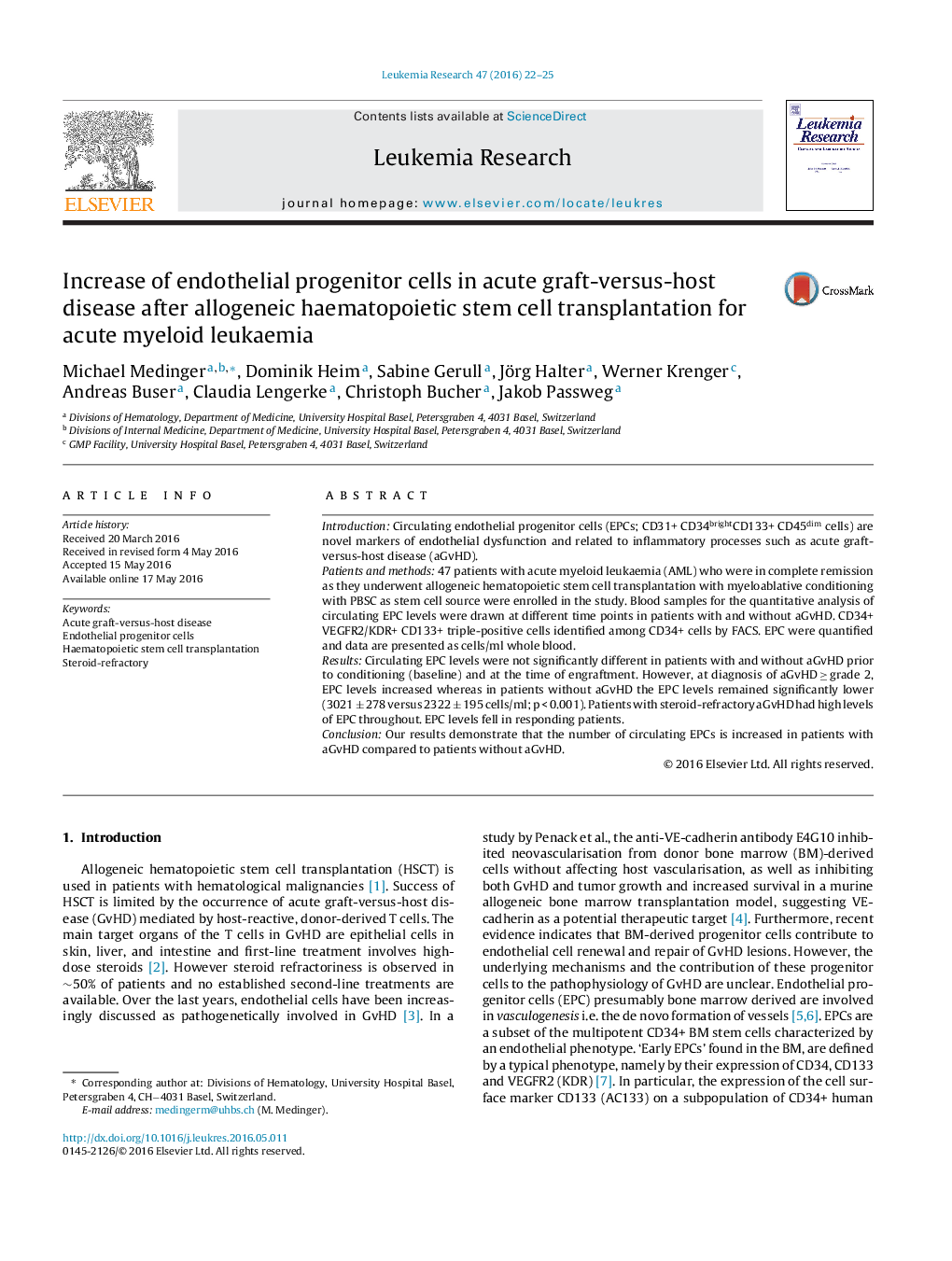| Article ID | Journal | Published Year | Pages | File Type |
|---|---|---|---|---|
| 2136436 | Leukemia Research | 2016 | 4 Pages |
•Circulating endothelial progenitor cells are increased in patients with acute graft-versus-host disease.•Circulating endothelial progenitor cells decrease in patients with steroid-sensitive acute graft-versus-host disease.•In steroid-refractory patients, endothelial progenitor cells remain at high levels.
IntroductionCirculating endothelial progenitor cells (EPCs; CD31+ CD34brightCD133+ CD45dim cells) are novel markers of endothelial dysfunction and related to inflammatory processes such as acute graft-versus-host disease (aGvHD).Patients and methods47 patients with acute myeloid leukaemia (AML) who were in complete remission as they underwent allogeneic hematopoietic stem cell transplantation with myeloablative conditioning with PBSC as stem cell source were enrolled in the study. Blood samples for the quantitative analysis of circulating EPC levels were drawn at different time points in patients with and without aGvHD. CD34+ VEGFR2/KDR+ CD133+ triple-positive cells identified among CD34+ cells by FACS. EPC were quantified and data are presented as cells/ml whole blood.ResultsCirculating EPC levels were not significantly different in patients with and without aGvHD prior to conditioning (baseline) and at the time of engraftment. However, at diagnosis of aGvHD ≥ grade 2, EPC levels increased whereas in patients without aGvHD the EPC levels remained significantly lower (3021 ± 278 versus 2322 ± 195 cells/ml; p < 0.001). Patients with steroid-refractory aGvHD had high levels of EPC throughout. EPC levels fell in responding patients.ConclusionOur results demonstrate that the number of circulating EPCs is increased in patients with aGvHD compared to patients without aGvHD.
